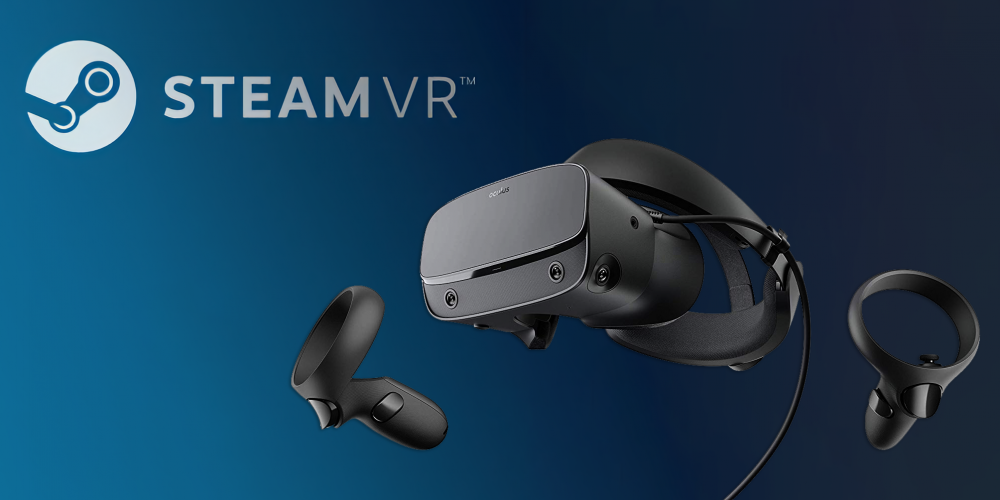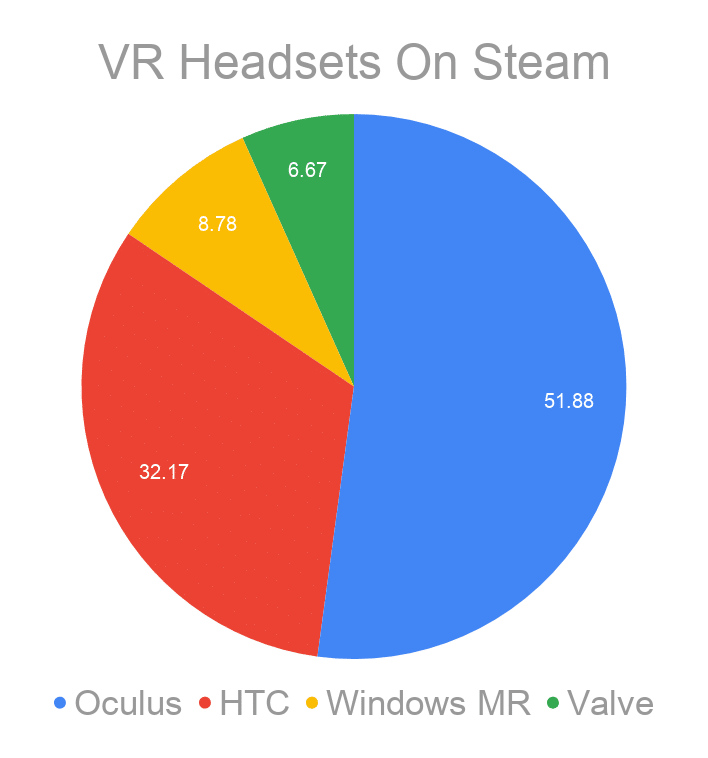SteamVR Stats for December 2019: Corrected Stats Shows the Winners Over the Christmas Season
Valve released SteamVR stats for the December Steam Hardware Survey at the start of this month but the data appeared to have had some anomalies. After four weeks, Valve has now corrected the SteamVR data. The tables below show the adjusted information.

The previous data released at the start of January showed that the usage for most of the virtual reality headsets had decreased considerably. This was instantly regarded as a possible anomaly as it was expected that usage would increase over the time duration. The anomaly was caused by the fact the number of Chinese VR users on the SteamVR Hardware Survey had increased to a level higher than in any other month. This increase was more than would be expected of the current normal growth trend in the Chinese market.
Now Valve has revised the December results of the Hardware Survey. They now show that virtual reality headsets have once again grown and the massive sure in Chinese language usage is no longer captured.
| November 2019 | December 2019 | |
|---|---|---|
| Oculus Rift | 0.36% | 0.37% (+0.01%) |
| Oculus Rift S | 0.15% | 0.21% (+ 0.06%) |
| HTC Vive | 0.33% | 0.33% |
| HTC Vive Pro | 0.02% | 0.02% |
| HTC Vive Cosmos | 0.00% | 0.00% |
| Windows Mixed Reality | 0.10% | 0.09% (- 0.01%) |
| Valve Index | 0.05% | 0.07% (+ 0.02%) |
| Oculus Rift DK2 | 0.01% | 0.00% (- 0.01%) |
| Overall | 1.02% | 1.09% (-0.07%) |
The previous table looked like this:
| November 2019 | December 2019 | |
|---|---|---|
| Oculus Rift | 0.36% | 0.29% (- 0.07%) |
| Oculus Rift S | 0.15% | 0.16% (+ 0.01%) |
| HTC Vive | 0.33% | 0.26% (- 0.07%) |
| HTC Vive Pro | 0.02% | 0.02% |
| HTC Vive Cosmos | 0.00% | 0.00% |
| Windows Mixed Reality | 0.10% | 0.08% (- 0.02%) |
| Valve Index | 0.05% | 0.06% (+ 0.01%) |
| Oculus Rift DK2 | 0.01% | 0.00% (- 0.01%) |
| Overall | 1.02% | 0.87% (-0.15%) |
Facebook’s Oculus Rift S experienced the strongest growth, surging from +0.06% to 0.21%. This means that 1 out of every 500 Steam users is now on Oculus Rift S headset. On the Black Friday week, the Rift S headset had been discounted to $349. This was the first time that the PC VR headset had been discounted.
Last year, the Rift S platform saw the release of some of AAA virtual reality hits such as Stormland and Asgard’s Wrath which could also have accounted for the increase in the usage of the original Rift by 0.01%.
With the introduction of the Oculus Link connection late last year, it is also very likely that the Hardware Survey is capturing Oculus Quest headsets (connected via Link) as Oculus Rift S headsets. SteamVR sees a Quest headset in Link Mode as a Rift S headset. This would, however, be applicable only if the Quest headset was connected to a PC at the time the survey was carried out. There are users who have reported that SteamVR registers ‘None Detected’ when it is surveyed using Link.
Windows Mixed Reality headsets growth has reduced slightly to just 0.09%. With these growth rates, it’s only a matter of a few months before the Valve Index headset usage overtakes that of the WMR. This would be remarkable if you take into account that the Samsung’s Odyssey+ (a WMR headset), with its lens separation alignment, OLED displays and built-in headphones has been heavily discounted to just about $230 in the past few months.
The high-end Valve Index virtual reality headset saw a 0.02% increase in growth. This is still an impressive growth given that the VR kit is priced at $1000. In spite of the exorbitant price, the Index headset is superb and currently offers end users the best overall virtual reality experience in the market with a 144Hz refresh rate that makes the virtual world appear more solid while motion appears more real.
The SteamVR User Base
For the overall SteamVR user base, there were even more interesting developments. The Oculus Rift market share has increased slightly and both Oculus Rift S and Valve Index headsets grew faster than the previous figures had suggested.
| November 2019 | December 2019 | |
|---|---|---|
| Oculus Rift | 35.55% | 33% (-2.55%) |
| Oculus Rift S | 14.83% | 18.46% (+3.63%) |
| HTC Vive | 32.64% | 29.75% (-2.89%) |
| HTC Vive Pro | 2.05% | 2.42% (+0.37%) |
| Windows Mixed Reality | 5.08% | 8.78% (+3.7%) |
| Valve Index | 4.93% | 6.67% (+1.74%) |
In terms of overall SteamVR user base, the biggest shift in percentage terms was in Windows Mixed Reality. Instead of losing a third percentage point as originally reported, its market share actually increased 3.7% in December 2019, the highest among the VR hardware. Should these stats prove accurate, then we could have had a lot more Windows Mixed Reality headsets under the Christmas trees than previously thought.
With regards to the total share of the SteamVR users, the user base grew by 0.07% instead of decreasing by 0.15% as had previously been suggested.
HTC’s Vive Cosmos headset has now amassed the critical mass of users to feature in the relative usage chart barely four months after it was launched. The Vive Cosmos overall usage still stands at just 0.41% which is slightly below the 0.42% for the Oculus DK2 from 2014 (keep in mind that this is a low-res dev kit without room scale or motion controllers). Marginal growth can be attributed to the Black Friday deals where the headset was discounted to $600.
From the latest Steam data, virtual reality is currently being used by 1.09% of Steam users. The overall usage has moved back to the September 2019 all-time high.

The growth in the virtual reality headset usage has to an extent been driven by the announcement of Half-Life: Alyx in November 2019 which led to a surge in demand for Valve Index and other VR headsets. The flagship Valve VR game is set to launch in March this year.
https://virtualrealitytimes.com/2020/01/29/steamvr-stats-for-december-2019-corrected-stats-shows-the-winners-over-the-christmas-season/https://virtualrealitytimes.com/wp-content/uploads/2019/06/SteamVR-600x300.pnghttps://virtualrealitytimes.com/wp-content/uploads/2019/06/SteamVR-150x90.pngHardwareTechnologyTechnology DiscussionValve released SteamVR stats for the December Steam Hardware Survey at the start of this month but the data appeared to have had some anomalies. After four weeks, Valve has now corrected the SteamVR data. The tables below show the adjusted information. The previous data released at the start of...Sam OchanjiSam Ochanji[email protected]EditorVirtual Reality Times - Metaverse & VR
